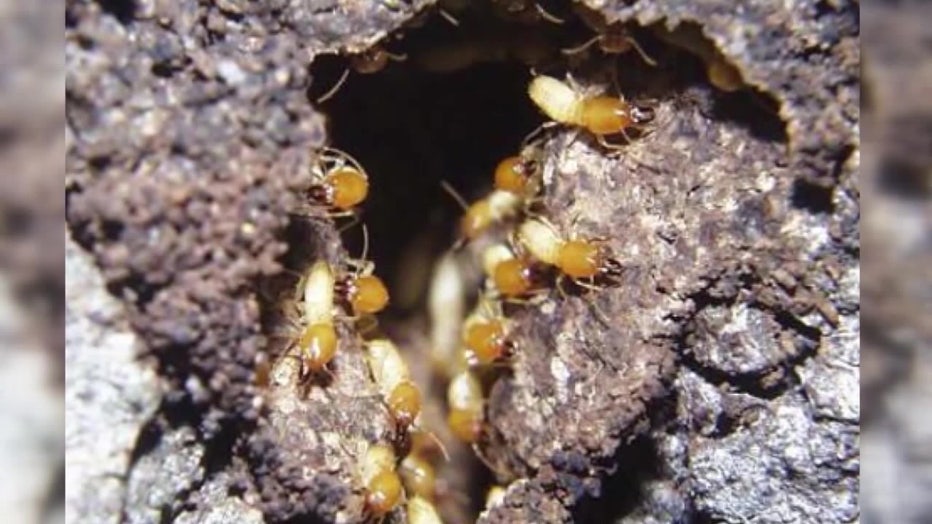Why do termites thrive in Florida?
MIAMI, Fla. - The hotter the temperatures, the happier the termites: That’s what a University of Miami-led study revealed.
"The termites were really interesting because they were super, super sensitive to temperature," UM biology professor Amy Zanne said.
Zanne, who led the international study, is currently researching termites in Brazil.
What her team did was pretty straightforward: Researchers brought a specific type of California wood to more than 130 sites across six continents. Researchers let the wood sit out for a year or so and then compared its ending weight to its starting weight to measure how much was eaten.

A study revealed that termites like hot weather. Courtesy: University of Miami
"And then we can attribute that to microbial decomposition, or we look for evidence of termites," Zanne said. "If you live in Miami, you see what your house looks like, you know when you have termites."
Their study revealed that termites thrive in hot weather.
"Their ability to find the wood, their discovery was highest in hot, dry places," Zanne said.
READ: How to make sure your A/C system runs efficiently in extreme Florida heat
They discovered termites on a 95-degree temperature day ate seven times faster on average than on a 77-degree day.
As for why Zanne and her team think termites eat wood faster in hotter temperatures, she said they have some ideas as to the answer. However, that topic is definitely something they’re hoping to explore in future research.

Termites eat wood faster in warmer temperatures. Courtesy: University of Miami
Zanne’s study focused on termites in the wild. But those termites are related to the termites you might find in your home, the professor added.
"We assume that probably the termites that associate with human habitations and things like that should show a similar increase in how fast they digest as the world warms," Zanne said.
So what are some tips to protect your home against termites?
READ: Ohio researchers develop new breed of honeybees to fight parasites
"This time of year, be looking in any spiderwebs that you have around your home, around the lights, around the pool area. What you're looking for is something (that’s) going to look like a flying ant," Coby McConnell, owner of Coby’s Tentless Termite and Pest Control said. "On the days that (the termites) swarm, did the wind blow toward your house or did it blow away from your house? So if it blew towards your house, then you're going to see those in your spider webs."

File: Termites
He also suggests what he calls a "$5 termite detection system."
Cut a 2x4 into eight one-foot sections and place the pieces in the four corners of your house.
"About every three to six months, you flip that thing over and if it's been eaten, you need to treat your home for termites. Now that is subterranean termites, a different termite. If it doesn't, you're probably pretty good," McConnell said.
Also, keep an eye out for anything that looks like coffee grounds – of any color -- or light, wispy wings inside your home. Those could be signs of termites, McConnell added.

